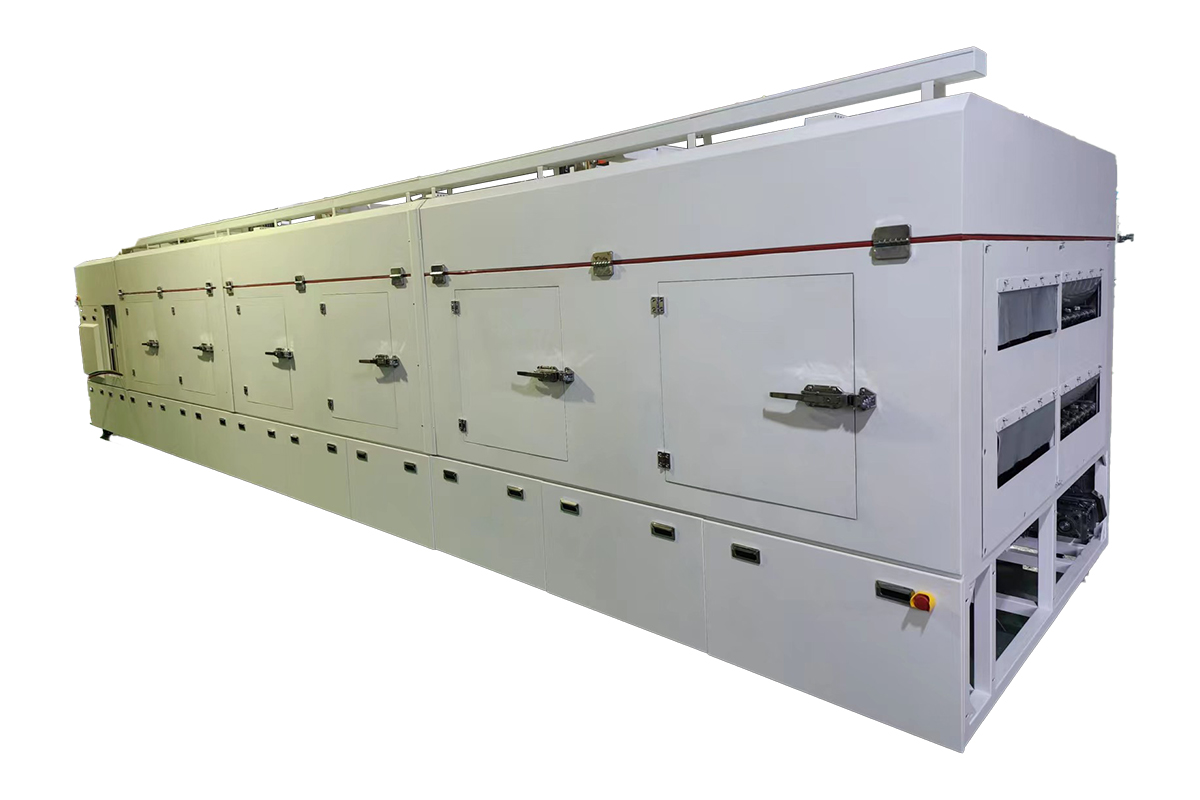In today’s electronics manufacturing and Industrial Automation sector, achieving consistent and reliable potting processes is critical. A Potting Curing Oven provides the controlled temperature and timing necessary to cure epoxy, silicone, polyurethane, and other potting materials. This process protects sensitive electronic components from moisture, dust, vibration, and chemical corrosion, ensuring product durability and performance.

What Is a Potting Curing Oven?
A Potting Curing Oven is a specialized curing solution designed for potting materials. Unlike a standard Industrial Oven, a Curing Oven for Potting ensures precise temperature uniformity and stable airflow, preventing uneven curing that can compromise product quality. These ovens are available in batch and continuous conveyor configurations, allowing them to integrate seamlessly into different production scales.
Role of Electronic Potting Curing Oven
An Electronic Potting Curing Oven is specifically built for applications such as PCB encapsulation, sensor potting, LED driver curing, and transformer potting. The oven’s precise temperature control guarantees consistent curing results across every batch, which is essential for industries like automotive electronics, aerospace, and medical devices where reliability and insulation performance are non-negotiable.
Applications of UV Curing Oven
When UV-curable materials are used, a UV Curing Oven delivers high-intensity UV light to instantly cure resins within seconds. This technology is perfect for high-speed production lines requiring fast cycle times, such as conformal coating, adhesive bonding, and electronic potting applications. UV curing technology helps reduce cycle time, improve throughput, and lower energy consumption.
Benefits of an Energy-efficient Curing Oven
As sustainable manufacturing becomes a priority, an Energy-efficient Curing Oven offers significant advantages. These ovens feature optimized insulation and heating elements, minimizing energy loss while maintaining consistent curing temperatures. Lower operational costs and reduced carbon footprint make energy-efficient models ideal for companies aiming to meet green manufacturing standards.
Value in Industrial Automation
In a fully automated production line, integrating a Potting Curing Oven with automatic dispensing machines and conveyor systems ensures seamless process flow. This reduces manual handling, minimizes quality variations, and increases overall throughput. As Industrial Automation continues to evolve, curing ovens play a vital role in maintaining high efficiency and repeatability.
Key Considerations When Choosing a Potting Curing Oven
Temperature Accuracy: Look for PID-controlled ovens with precise sensors for consistent curing.
Capacity & Flexibility: Choose between batch or multi-tier designs to suit your production volume.
Energy Efficiency: Opt for an Energy-efficient Curing Oven to reduce operating costs.
Material Compatibility: Ensure the oven supports epoxy, silicone, polyurethane, and UV-curable materials.
Safety & Certifications: Check for CE, RoHS, or other relevant safety and quality certifications.
By selecting the right Potting Curing Oven—whether it’s a batch Curing Oven for Potting, a fast-curing UV Curing Oven, or an Energy-efficient Curing Oven—manufacturers can achieve superior product reliability, reduce operational costs, and keep pace with the growing demands of Industrial Automation.








